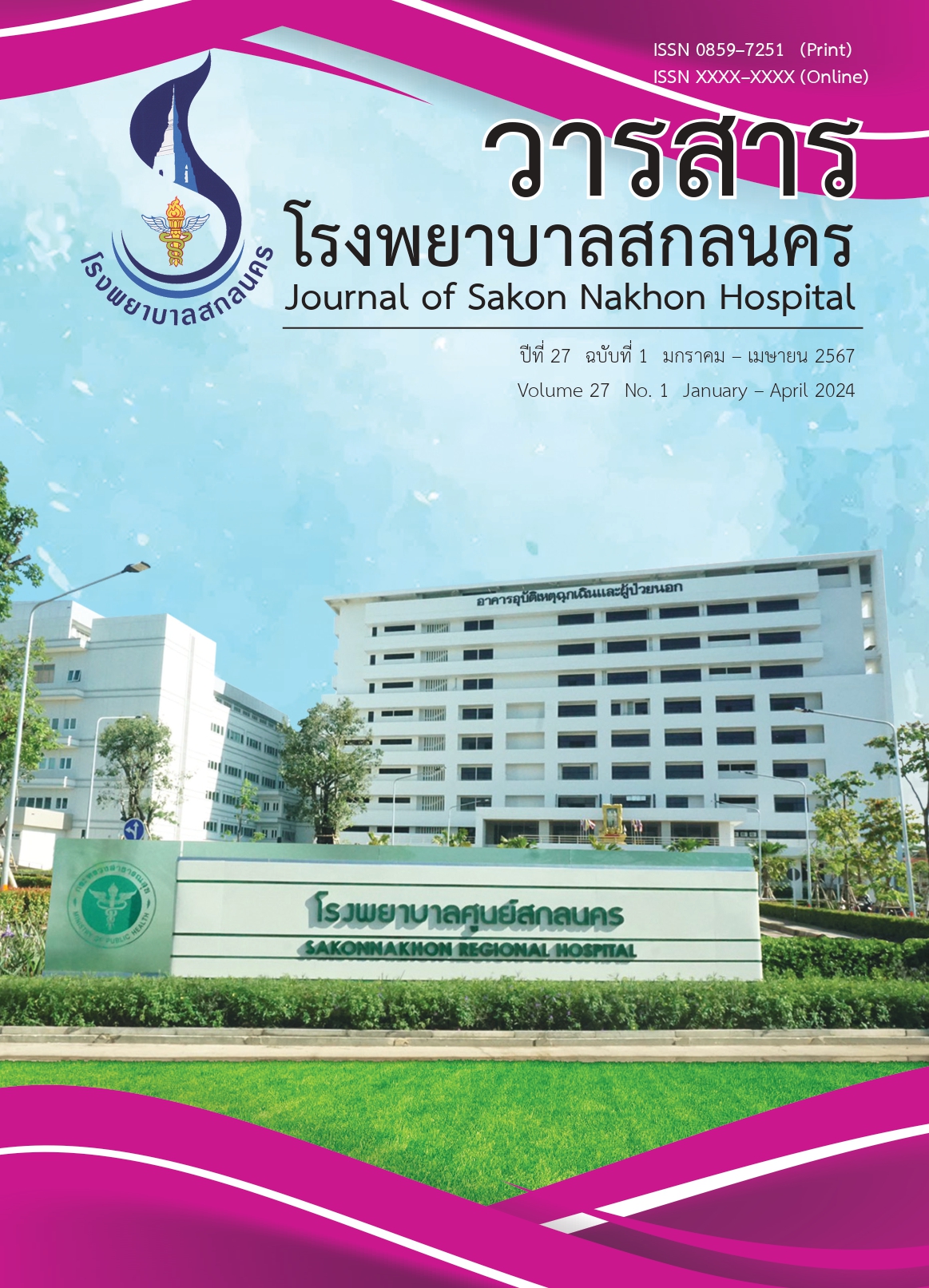Helminthiases Situation at the Lower Huai Luang River Basin Development Project, Nong Khai Province (in the area of Udon Thani Province)
Keywords:
Helminthiasis, Water source development project, Liver flukeAbstract
Parasitic infection surveillance and control project to solve the problem of the impact on the spread of parasitic helminths, under the integrated water resource management plan Lower Huai Luang River Basin Development Project Nong Khai Province, fiscal year 2023 (In the area of Udon Thani Province). The objective of this study was to determine helminthic infections in the people and zoonotic helminthiasis in the reservoir animals including dogs, cats, cows, buffalo, and goats that reside in the high–risk communities within the project area, as well as survey the health behaviors of people at risk of infecting and spreading helminthiases (blood fluke, liver fluke, intestinal fluke, soil–transmitted helminth, etc.). Results of stool examination and surveys are summarized as follows:
1) Results of people’s stool examinations: It was discovered that 14.22% of the 914 samples were infected with helminths and intestinal protozoa. Seven different helminth types were found infectedin thepopulation; the three most common ones were liverflukes (7.99%), Taenia spp. (1.86%) and minute intestinal flukes (1.20%).
2) Results of reservoir hosts stool examination: Out of the 481 samples obtained, 42.83% had helminth and protozoa infections. Intestinal helminth and protozoan infections were found in 61.21%of cats, 49.38% of cattle, 45.05% of dogs, and 32.53% of buffalo. There are 3 helminth types that can cause a disease in humans including hookworm (Ancylostoma caninum), tapeworm (Spirometra
mansoni) and liver fluke (Opisthorchis viverrini).
This studydid notfindanyinstancesof human bloodflukein either humansoranimals. However, liver fluke infection remains a significant health concern in the area, with a prevalence exceeding 5%. Liver flukes are capable of causing hepatobiliary cancer and can successfully complete their life cycle within this area. Additionally, various helminthic eggs were not only found in humans but also in
reservoir animals. Dogs and cats exhibited the highest prevalence of detected zoonotic helminth eggs. In this regard, the surveillance, prevention, and control of helminthic infection and transmission need to conducted in this area, especially liver flukes.
References
กรมชลประทาน. แผนปฏิบัติการป้องกันแก้ไขผลกระทบสิ่งแวดล้อมและแผนติดตามตรวจสอบผลกระทบ สิ่งแวดล้อม. สำนักงานบริหารโครงการ, กระทรวงเกษตรและสหกรณ์; 2556
กระทรวงสาธารณสุข. แผนปฏิบัติการพัฒนาด้านอนามัยและสิ่งแวดล้อม และการติดตามประเมินผลด้านสาธารณสุข. สำนักงานปลัดกระทรวงสาธารณสุข: กระทรวงสาธารณสุข; 2556.
ประยงค์ระดมยศ, สุวณีสุภเวชย์, ศรชัย หลูอารีย์สุวรรณ. ตำราปรสิตวิทยาทางการแพทย์. กรุงเทพฯ: เมดิคัล มีเดีย; 2539.
ประยงค์ระดมยศ, อัญชลีตั้งตรงจิตร, พลรัตน์วิไลรัตน์, ศรชัย หลูอารีย์สุวรรณ, แทน จงศุภชัยสิทธิ์. Atlas of medical parasitology. พิมพ์ครั้งที่4 . กรุงเทพฯ: เมดิคัล มีเดีย; 2541
Limpanont Y, Phuphisut O, Reamtong O, Adisakwattana P. Recent advances in Schistosoma mekongi ecology, transcriptomics and proteomics of relevance to snail control. Acta Tropica 2020;202:105244
สำนักโรคติดต่อทั่วไป กรมควบคุมโรค.แผนปฏิบัติการประจำปี2556. กระทรวงสาธารณสุข. คู่มือการเฝ้าระวังโรคพยาธิใบไม้เลือด กรมควบคุมโรคติดต่อกระทรวงสาธารณสุข การศึกษาโรคพยาธิใบไม้เลือด ซิสโตโซมิเอซิสในโครงการเขื่อนรัชประภา มหาวิทยาลัยมหิดล, คณะเวชศาสตร์เขตร้อน, ภาควิชาอายุรศาสตร์เขตร้อน;2556
Limpanont Y, Chusongsang P, Chusongsang Y, Limsomboon J, Sanpool O, Kaewkong W, et al. A new population and habitat for Neotricula aperta in the Mekong river of northeastern Thailand: a DNA sequence–based phylogenetic assessment confirms identifications and interpopulation relationships. Am J Trop Med Hyg. 2015;92(2):336–9.
Ritchie LS. An ether sedimentation technique for routine stool examinations Bulletin. United States Army Medical Department 1948;8(4):326
Pourhoseingholi MA, Vahedi M, Rahimzadeh M. Sample size calculation in medical studies. Gastroenterol Hepatol Bed Bench. 2013;6(1):14–7.
Ramsan M, Montresor A, Foum A, Ameri H, Di Matteo L, Albonico M, et al. Independent evaluation of the Nigrosin–Eosin modification of the Kato–Katz technique. Trop Med Int Health. 1999;4(1):46–9.
Zeibig, Elizabeth A. Clinical parasitology: a practical approach. 2nd ed: St. Louis: Elsevier: 2013
กัลยาณีจันธิมา, ชมัยพรนิลราช, ชัชวาลย์น้อยวังฆัง. โรคหนอนพยาธิในพื้นที่อ่างเก็บน้ำลําชีจังหวัดชัยภูมิ.ว. ศูนย์อนามัยที่9 2566;17(2):701-714.
Downloads
Published
How to Cite
Issue
Section
License
บทความที่ตีพิมพ์ถือว่าเป็นลิขสิทธิ์ของวารสารโรงพยาบาลสกลนคร การคัดลอกเพื่อพัฒนาเชิงวิชาการต้องได้รับการอ้างอิงอย่างถูกต้อง






